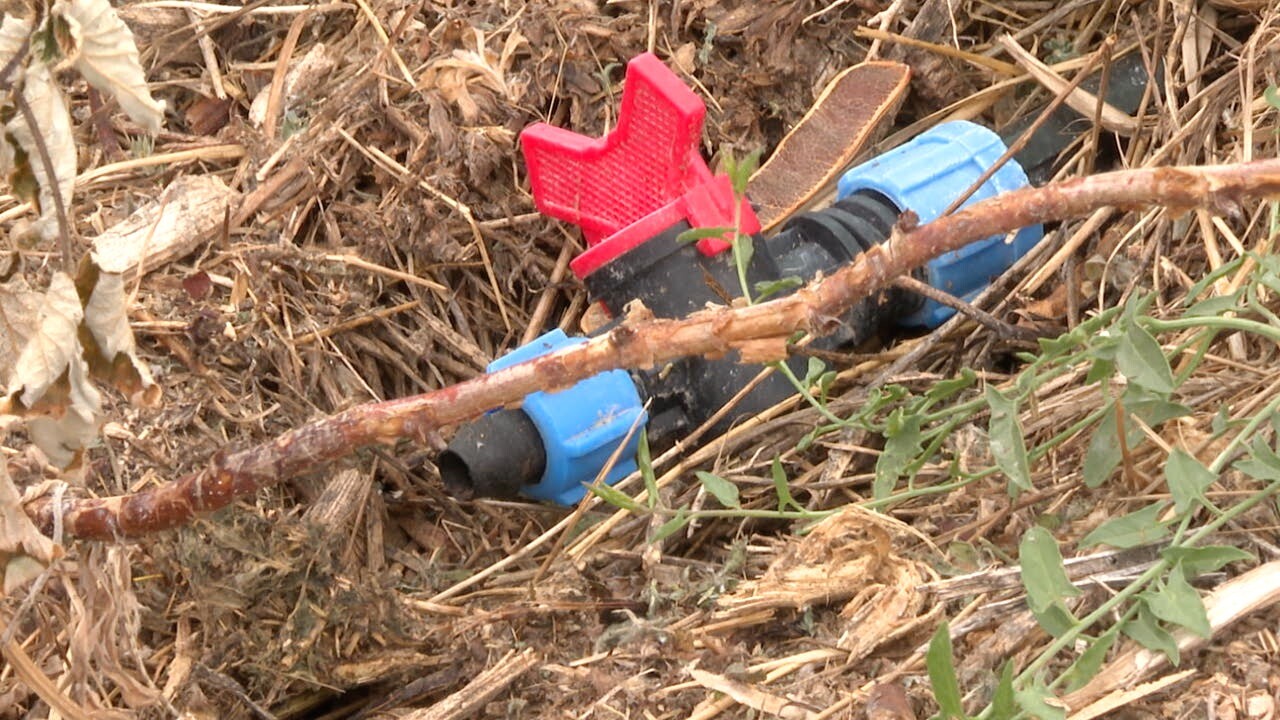TWIN FALLS, Idaho — A dry spring followed by a summer heatwave has enabled a major drought this year. Now, experts are predicting whether or not 2021 is the start of a multi-year drought.
Wildfires, a loss in agriculture, a strain put on energy production are just a few of the impacts related to drought. Despite nearly normal snow levels, Idaho is currently in the middle of a major drought having the driest spring on record since 1924.
But the question remains: for how many years will it last and how will some of the states leading industries handle the long-term effects?

“If something does not change this winter, then we will be impacted next year,” said Kirk Tubbs.
Heidi and Kirk Tubbs are the owners of Tubbs Berry Farms in Twin Falls. Luckily, this year's drought minimally impacted them, but that does not mean there isn't any worry.

“This year, we had most of our water shares for most of the season,” said Heidi Tubbs. “If we don’t get the snowpack for next year, then that could change, and it could definitely impact our area.”
One of the ways Tubbs Berry Farms managed this year was through the use of their drip irrigation system which they say helps them use a very small amount of water.

“In Idaho, we are in a desert so the best thing we can do is conserve our water and use it wisely when we have it,” said Kirk Tubbs.
Farmers are helping farmers as the Tubbs family also spends time teaching others how they effectively conserve water by supplying garden irrigation kits to their fellow growers.

“From a water resource perspective, we should start thinking about what happens if we hit a ten-year drought,” said David Hoekema, a hydrologist with the Idaho Department of Water Resources.
Hoekema said through looking at our climate over the last 100 years, he is expecting us to see some drier years for a while.
“We have seen more extreme swings from really wet to really dry,” said Hoekema. “When you are looking at that pattern, it seems like maybe if we continue into that pattern, we could be entering into a really dry period.”
Hoekema describes water as the lifeblood of Idaho, something echoed by Idaho Power’s hydro portfolio which makes up about 40% to 50% of their energy each year.
“Water is certainly our fuel for those resources, and if we have less water, that generally relates to less electricity,” said Idaho Power COO Adam Richins.
The use of hydroelectricity helps keep Idaho Power’s prices 20% to 30% below the national average, but relying on hydro means years of drought could mean a higher power bill for consumers.

“If there is less water, it can get a little bit more expensive for customers,” said Richins. “That means we are using resources or buying energy at a higher price and that ultimately can impact customers' rates.”
Without water, Idaho Power would shift to buying or using energy sources, such as solar, wind, or natural gas energy, which often cost more than hydro.
“Solar prices have gone down significantly over the last decade,” said Richins. “Wind prices have gone down too so you will see more solar and wind.”
Preparation is often the key to success, and Hoekema said Idaho is always making progress in managing drought including a focus on aquifer recharge during the wetter years.
“Sometimes droughts end up in water wars but in the end, the problem has got to be solved and it’s not solved by fighting,” said Hoekema. “It is solved by coming together and looking at our limited resources and figuring out how to manage it better.”






